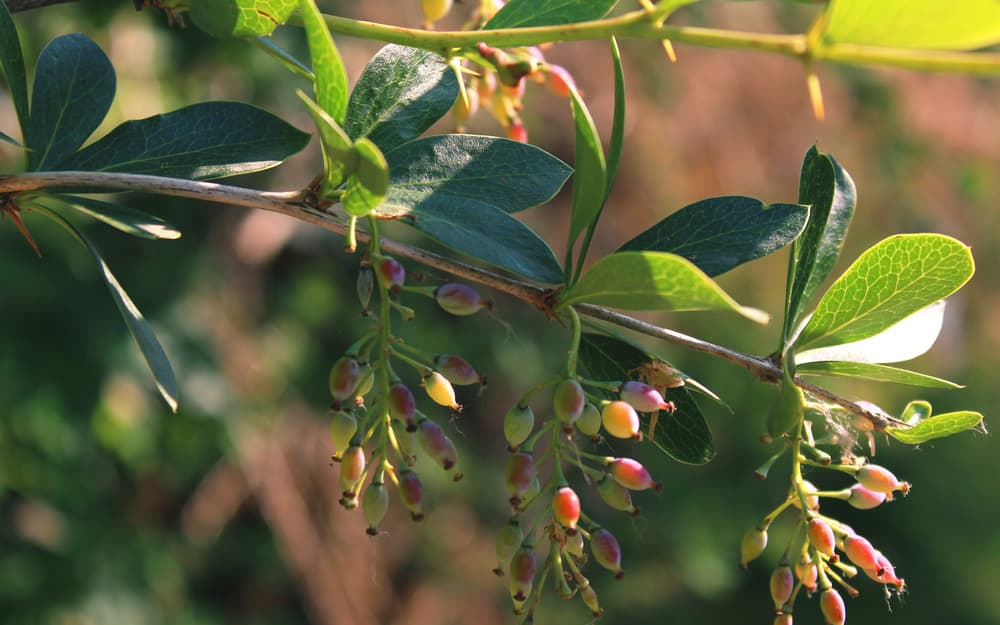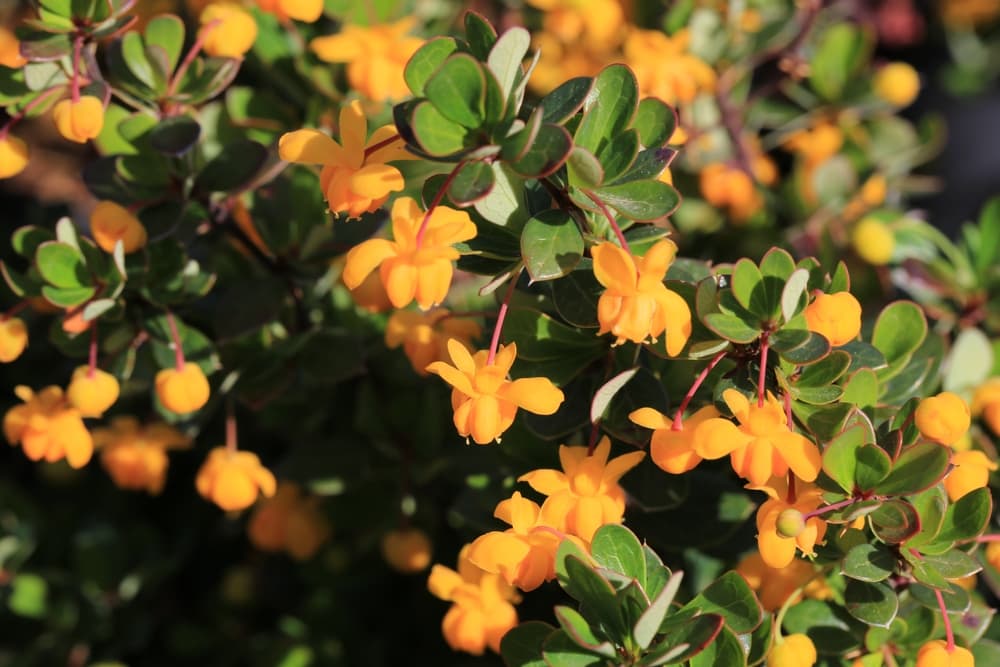
Elizabeth is a Permaculture Garden Designer, Sustainability Consultant and Professional Writer, working as an advocate for positive change. She graduated from the University of St. Andrews with an MA in English and Philosophy and obtained a Diploma in Applied Permaculture Design from the Permaculture Association.
Reviewed By COLIN SKELLY

Colin is a Horticulturist and Horticultural Consultant with experience in a range of practical and managerial roles across heritage, commercial and public horticulture. He holds the Royal Horticultural Society’s Master of Horticulture award and has a particular interest in horticultural ecology and naturalistic planting for habitat and climate resilience.
IN THIS GUIDE
BERBERIS GUIDES
Overwintering
Propagation
Pruning
Varieties
Berberis, also known as ‘Barberry’, is an easy-to-grow shrub that is native to many countries across the world.
Here in the UK, there are a number of named varieties and cultivars that are grown extensively due to their ability to grow with ease in our mild climate.
“Berberis species and cultivars make versatile garden plants, from compact forms for smaller gardens through to large shrubs, all offering both early flowers and autumn berries,” says Colin Skelly, Horticultural Consultant.
“Some even display stunning autumn colours and can also be left unpruned or clipped, making them suitable for a range of garden styles.
“My personal favourite is Berberis darwinii for its vibrant orange spring flowers and edible blue berries in autumn.”
Here are some favourites you may find interesting to grow:
1) Berberis vulgaris

Berberis vulgaris is known as the common barberry.
It grows wild through much of Europe and is naturalised here in the UK and northern Europe.
It is cultivated for its fruits in a number of countries.
Traditionally, the berries have been used in jam making and in Iran, are commonly used as currants in rice pilaf.1Focus On Culture: Barberries. (2015, October 11). Polyglottando. Retrieved March 13, 2023, from https://www.polyglottando.com/?cat=30
2) B. darwinii

B. darwinii is one of the two main parents for cultivars in the UK and a very popular garden and hedging shrub here.
It is native to southern Chile and Argentina and naturalised in many other places.2Berberis darwinii. (n.d.). Kew Royal Botanic Gardens. Retrieved March 13, 2023, from https://powo.science.kew.org/taxon/urn:lsid:ipni.org:names:273235-2
Growing to an eventual height of 3-4m (or even taller) it is a thorny evergreen which bears stunning orange flowers in spring which are followed in summer by purple-black (edible though rather acidic) berries.
This plant takes its name, of course, from Charles Darwin, who discovered it in 1835 during the voyage of The Beagle.3Berberis darwinii. (n.d.-b). Oregon State University. Retrieved March 13, 2023, from https://landscapeplants.oregonstate.edu/plants/berberis-darwinii
3) B. thunbergii

B. thunbergii is the other main parent for many UK Berberis cultivars.
It is also known as Japanese barberry, Thunberg’s barberry or red barberry.
Native to Japan and east Asia, it is widely naturalised elsewhere and is common in UK gardens.4Berberis thunbergii. (n.d.). Kew Royal Botanic Gardens. Retrieved March 13, 2023, from https://powo.science.kew.org/taxon/urn:lsid:ipni.org:names:107136-1
It is a smaller shrub that typically grows to 1m tall and around 2.5m wide.
Its leaves typically turn a glorious red in autumn, and it also bears its red fruits at this time of year.
Pale yellow flowers appear in the spring – unlike other Berberis, this one bears its flowers in umbels, not racemes.
4) B. aristata

B. aristata is another evergreen shrub, hardy to UK zone 6 and not frost tender.
It is also known as Indian barberry or Chitra and is native to the Himalayas.
It flowers in around May and also produces edible berries which are commonly dried and used like raisins in India.
5) B. buxifolia

B. buxifolia is also known as Magellan barberry.
It is native to South America but has occasionally naturalised in Britain.5Berberis buxifolia – Magellan Barberry. (n.d.). PFAF Plant Database. Retrieved March 13, 2023, from https://pfaf.org/user/plant.aspx?LatinName=Berberis+buxifolia
It is hardy to UK zone 5 and is not frost tender.
Again, it has edible fruits, and some say that these are the best flavoured of the South American barberries.
Green unripe fruits can also be used like gooseberries in pies etc.
There are plenty of other barberries – but the above are all interesting options to consider – both for aesthetic reasons and because these are the varieties with the most edible berries.
For both visual appeal and edible berries, B. darwinii is highly recommended.
For the greatest year-round visual interest, B. thunbergii would be our top pick – though the berries on this are technically edible, however, they do not taste very good.
Top cultivars to consider include:
6) B. darwinii ‘Compacta’

A more compact cultivar with beautiful flowers and edible berries.
7) B. x lologensis ‘Apricot Queen’

A hybrid of B. darwinii with stunning flowers.
8) B. thunbergii f. atropurpurea

Incredibly easy to grow, with beautiful foliage.
References
- 1Focus On Culture: Barberries. (2015, October 11). Polyglottando. Retrieved March 13, 2023, from https://www.polyglottando.com/?cat=30
- 2Berberis darwinii. (n.d.). Kew Royal Botanic Gardens. Retrieved March 13, 2023, from https://powo.science.kew.org/taxon/urn:lsid:ipni.org:names:273235-2
- 3Berberis darwinii. (n.d.-b). Oregon State University. Retrieved March 13, 2023, from https://landscapeplants.oregonstate.edu/plants/berberis-darwinii
- 4Berberis thunbergii. (n.d.). Kew Royal Botanic Gardens. Retrieved March 13, 2023, from https://powo.science.kew.org/taxon/urn:lsid:ipni.org:names:107136-1
- 5Berberis buxifolia – Magellan Barberry. (n.d.). PFAF Plant Database. Retrieved March 13, 2023, from https://pfaf.org/user/plant.aspx?LatinName=Berberis+buxifolia

